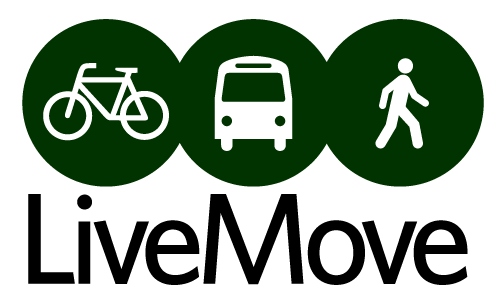Eugene Sidewalk Quality
-
The Sidewalk Quality Team set out to measure and assess sidewalk and crosswalk conditions in Eugene. The team was supervised by Professor Anne Brown, coordinated by Chris Skawski, and supported by student researchers: Alexis Alonso Gudino, Aidan Austin, Ben Bedard, Amena Martinez-Smith, Matt McCreary, Braden Ravenscraft, Jordan Rohrer, Jacob Roth, Avi Shugar, and Blaire West.
What’s the Problem?
The LiveMove Sidewalk Quality Team has worked through the 2022-2023 academic year collecting data on sidewalk quality and street crossing treatments in Eugene. An initial group researched best practices from sister jurisdictions and incorporated ADA design guidelines to create a comprehensive sidewalk assessment survey. Student workers signed up for zones of the city where they oversaw data collection.
In these zones, students used Survey123 to collect data on sidewalk quality including affected pavers and size, passage, uplift, cross-slop, running slope, surface condition, and obstructions. Student researchers documented the quality via a photo and added any additional notes in the submission. Students collected data on crossing treatments present at each crossing section of an intersection.
Why Survey?
The data collected will help the City of Eugene prioritize opportunities for city-funded repair and investment of sidewalks throughout our community. This data is valuable because this is a new type of data that the city can utilize to make informed decisions around sidewalks. This data can also be used to help prioritize areas where sidewalk quality is poorest. With the passage of the fourth Street Repair Bond Measure, the city levied $61.2 million over a five-year period, to address specific improvement projects. Five million of the bond has been set aside to address “Walking Projects” including sidewalk construction, reconstruction, and rehabilitation.
What We Measured
Data Sources
To determine what we wanted to record and how we wanted to record it, we consulted many outside sources. Data sources include ADA guidelines, NACTO, Federal Highway Administration, and KCMO Crosswalk Marking Policy. Special thanks to Emily Burns, Katherine Midkiff, Chad Allen, Michael Davis, and Michael Andrews from the City of Seattle for sharing their methods and materials with our group. Some of these materials include San Diego’s Sidewalk Assessment Report, Clayton’s ADA Transition Plan, and Seattle’s Sidewalk Assessment Guides.
Sidewalk Criteria
The data collected on sidewalk quality included measurements of:
· Passage is a measurement of the passable width of a sidewalk. Narrow sidewalks can impede mobility.
- Obstructions are the objects impacting passage. Obstructions observed included post or pole, fire hydrant, vegetation, and other types.
· Uplift is the difference between two sidewalk slabs. Instances of uplift can present mobility challenges for sidewalk users.
· Cross-slope, or angle perpendicular to travel, is common for sidewalks to manage stormwater and runoff. However, steeper angles can present mobility challenges.
· Running slope, or angle parallel to direction of travel, of steeper grades can present mobility challenges.
· Surface condition is a subjective measurement on a five-point scale describing impacts on mobility, the scale is:
Perfect/ Very Good – No defects or nearly no defects and no surface conditions that would impact mobility.
Good – Sidewalks have some cracks or other imperfections, but not to the degree that they present immediate significant mobility concerns.
Moderate – Sidewalk has some deterioration which may currently or immediately present mobility challenges.
Critical – Sidewalk has significant damage or other conditions which make it nearly completely impassable for individuals on mobility-assistance devices.
Poor – Sidewalk presented immediate mobility concerns and/or risk near-term deterioration.
Crosswalk Treatment
Crossing treatments were recorded at all “branches” of an intersection for which there were appropriate curb cuts. Categories of treatments recorded included:
· Raised Crosswalks – Elevated crossing space to improve visibility for both pedestrians and drivers, these also slow down drivers. The crosswalks may be paired with paints or off-color materials to improve visibility.
· Bump Outs – A reshaped curb or sidewalk that protrudes into the space of the road to reduce distance to cross a street and improve visibility.
· Parking Restrictions on Crosswalk Approach – Reduces the number of visual barriers for pedestrians wanting to cross and oncoming traffic.
· Advanced Signage – Gives drivers more advanced notice of changing conditions, providing them with enough time to slow down.
· In-Street Signage – Signage, often brightly colored, to denote the location of pedestrian crossings.
· Pedestrian Hybrid Beacon – A combination of lighting and signage that is designed to get drivers’ attention in high traffic, low visibility, or otherwise treacherous crossing locations.
· Pedestrian Refuge Island - Infrastructure that allows pedestrian to wait safely midway through an intersection while crossing.
· Painted or Marked Crosswalk – These crosswalks denote where pedestrians are crossing and give drivers visual cues on where to stop while arriving at an intersection.
· Pedestrian Crossing Signal - Lights that specifically indicate to pedestrians the appropriate time to cross
· Stop Lines – Lines that denote where vehicles must stop at an intersection when pedestrians are present.
· Other – Treatments not listed above.
Sidewalk Condition Inventory
The map below shows every sidewalk condition report our team gathered. Use the search function to view sidewalks at a specific address or click and drag to explore the city. Click on any point to see information on the extent of the damage, uplift, slope, and passage recorded at each location.























